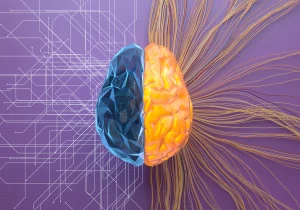User experience with chatbots has been a rocky journey to date. So, what exactly makes Alana Conversational AI different from your run-of-the-mill bot?
We’ve all had experiences of chatbots struggling to hold their own in a conversation with a human. Dead air and dead ends are all too frequently the conclusion of computer-generated dialogues. But conversational AI changes this by tackling head-on three of the common reasons why chatbots fail.
Three reasons chatbots fail
- Chatbots struggle to understand the user’s intent and longer phrases
- They need to be able to respond in a more relevant and meaningful way especially where conversation does not follow prescriptive paths.
- Most are limited to retrieving information and performing functional tasks
The purpose of this post is to show how Alana is overcoming these three limitations to deliver a more engaging and satisfying conversational AI experience for the user.
1. Alana gathers context to detect and read user intent more accurately
Most standard chatbots work from a hard-coded script, with little flexibility when it comes to the words and expressions they understand. In short, they’re programmed to understand what you say, but they don’t always understand the meaning behind the words.
Conversational AI works differently. For example, using a combination of Natural Language Understanding (NLU) and machine learning, Alana can understand context, detect sentiment and recognise patterns of speech when interacting with a human.
This allows Alana to better comprehend what a user really wants from a conversation and to predict where it will go next, no matter how they choose to specifically word a command or phrase or if they change flow mid-sentence
2. Alana strays off-script to craft a more meaningful response
Real, human conversations don’t follow pre-written scripts or the predictable structure of a fixed decision tree. And neither does Alana. Instead, we train our conversational AI to reach conclusions autonomously and spontaneously based on a combination of data, recall and learned experience.
Conversational AI evolves with every interaction. Practically speaking, this means Alana stores responses from every communication and uses this learning to choose how to behave and reply in future conversations. It’s this application of deep learning that creates Alana’s human-like ability to read the flow of dialogue and provide responses that are more relevant, engaging and meaningful.
3. Alana isn’t just smarter than your average chatbot, it can also be a companion
Until recently, the role of chatbots was limited to retrieving information and executing routine tasks more efficiently, without the need for human intervention. This is certainly a valuable function, but inevitably, talking to a chatbot feels like you’re interacting with data, rather than a person.
But what if ‘human’ interaction is what a person needs most from a conversation? Conversational AI seeks to bring a more natural, personable quality to dealing with bots. If you change the subject mid-chat, Alana follows. If you get upset, Alana shows compassion. By using language that’s human-like, our AI agents build a more authentic connection with users. This opens up the option to use Alana in more of a companion role, holding conversations that are engaging and entertaining as well as functional.
Alana is not a chatbot
Chatbots aren’t the future. Alana develops AI technology that’s disrupting expectations around the conversational ability of computers and robots. So, if you’re ready to stray off script, let’s start that conversation.



